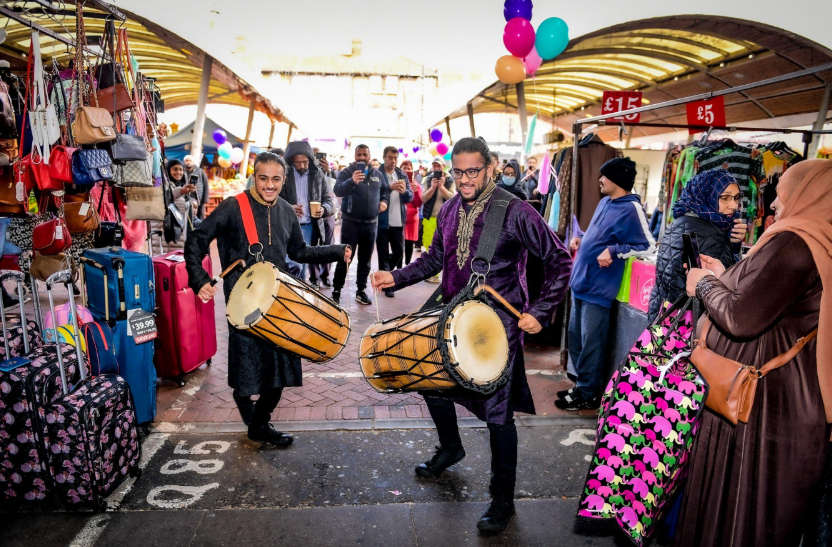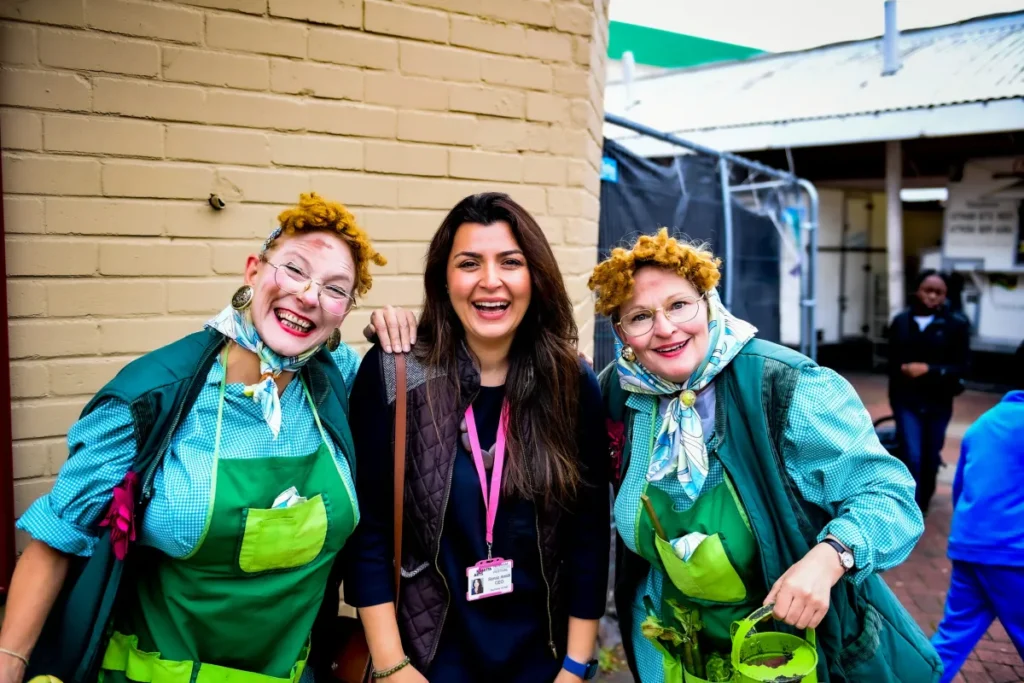
Since the pandemic, the need for access to art and culture has never been stronger. In times of isolation, grief and anxiety we naturally turn to art to help us reflect, remember and recover. Now we are on the other side of the pandemic, art is being used to help us reconnect to our physical environments and local communities.
Art in public spaces contributes to society; whether incorporated into the built environment, blended with nature, installed as stand alone works of art or staged as performances. When it is accessible to all, art brings joy, contributes to mental wellbeing, catalyses change, creates a sense of identity, attracts tourism and brings people together. Art and culture form the beating heart of our towns and cities.
Recent research by the Centre for Cultural Value has shown the important relationship between culture and placemaking. Their review of 126 studies found that grassroots approaches to placemaking can have more positive socio-economic outcomes than initiatives developed by non-local stakeholders. The very process of collaboration between local stakeholders is a key part of a placemaking project; without this, ‘top-down’ management can lead to the alienation of a local community where the policymaking is being enacted.
Utilising this approach, in 2021, as the world was slowly emerging from the pandemic, I was commissioned to produce a festival in the London Borough of Newham that encouraged people to re-enter public spaces, support the local businesses and reconnect with their community. As the then CEO of Rosetta Arts, a Newham based arts and education charity, in my mind, the only way to create something that resonated with the community was to involve artists from the borough itself to develop and deliver the festival.
As Producer of the Newham Unlocked festival, we commissioned the world-renowned and highly respected Jeanefer Jean-Charles as Artistic Director. We also collaborated with a variety of local stakeholders to identify the talent needed to help plan, curate, and perform in the festival.
We decided to animate the local Queen’s Market, as well as relevant businesses on the high street, Green Street, in order to attract different demographics from the community. This approach led to over 300 artists performing and more than 50 businesses and community groups engaging with the month-long festival, of which 93% were from Newham. Over a thousand residents attended the free events and workshops and participants and businesses provided positive feedback. One local market trader Seyed said: “It was a good time. I met lots of new people who never visited the market. They were interested in what this space is, many of them never heard of it before. I noticed an increase in sales on the day of the festival. Everyone was nice, happy, everyone was smiling and dancing. Do I feel connected to the community? Of course, I do.” The festival not only brought life back to the streets after the pandemic and kick-started local businesses, but also identified and showcased talent and gave local artists a safe space to perform and be celebrated.

For me, this event demonstrated the importance of arts-based and cultural placemaking in a community. Without the backing of residents even the most thriving high streets won’t survive. Nurturing young artistic talent and supporting creative communities, will ensure that public art has a meaningful impact. This also proves how crucial it is for artists and community groups to play a role in regeneration. They are the gatekeepers of the community, so it is vital to work with them to determine what people want and need.
After the festival, I saw an opportunity to develop talent for this very purpose. I recognised that at the intersection between artists, businesses, government and communities, there needs to be a representative talent pipeline to carry out creative placemaking that meets the needs and interests of a community, and Cultural Producers are the critical glue in this intersectionality.
As the Independent Chair of Creative Newham, a 70+ strong alliance of arts, cultural, educational, social and voluntary organisations committed to growing cultural mobility in Newham, we successfully piloted a Cultural Producers training programme, and this year secured £1.6m to scale this up, and appoint the University of East London as the managing and accountable lead organisation. We expect to see, over the next three years, 46 young adults and a further 70+ benefit from training programmes in cultural production and skills, and to equip them with the tools, knowledge and experience to enter not only the creative arts sector, but to produce work to support social practice, health and the environment.
Effective placemaking projects that involve artists go well beyond the idea of art for art’s sake. Cultural placemaking can improve education, wellbeing, economic growth and community cohesion. Arts and culture needs to be a central component, not an afterthought, in our urban planning and development.
Despite the wealth of research proving this, over the past decade funding in the arts has decreased by 30-50% across the UK, leaving artists and creative organisations struggling to operate. In fact, a recent investigation published by Arts Professional and MyCake has found that the finances of arts and culture organisations in the UK are the worst they have been in the last five years. The 2,800 organisations examined posted a combined deficit of £117.8m in 2023.
With the upcoming general election in the UK, now is the time to be thinking about who we want to help shape our public spaces. I hope the new government sees the value that arts and culture have to the economy and people’s wellbeing and puts arts, culture and the creative industries at the centre of their policy plans.
Visit my Creative Director page to find more examples of my work or get in touch with me to discuss how I can help you engage local artists ethically and authentically with your placemaking and urban planning projects.

